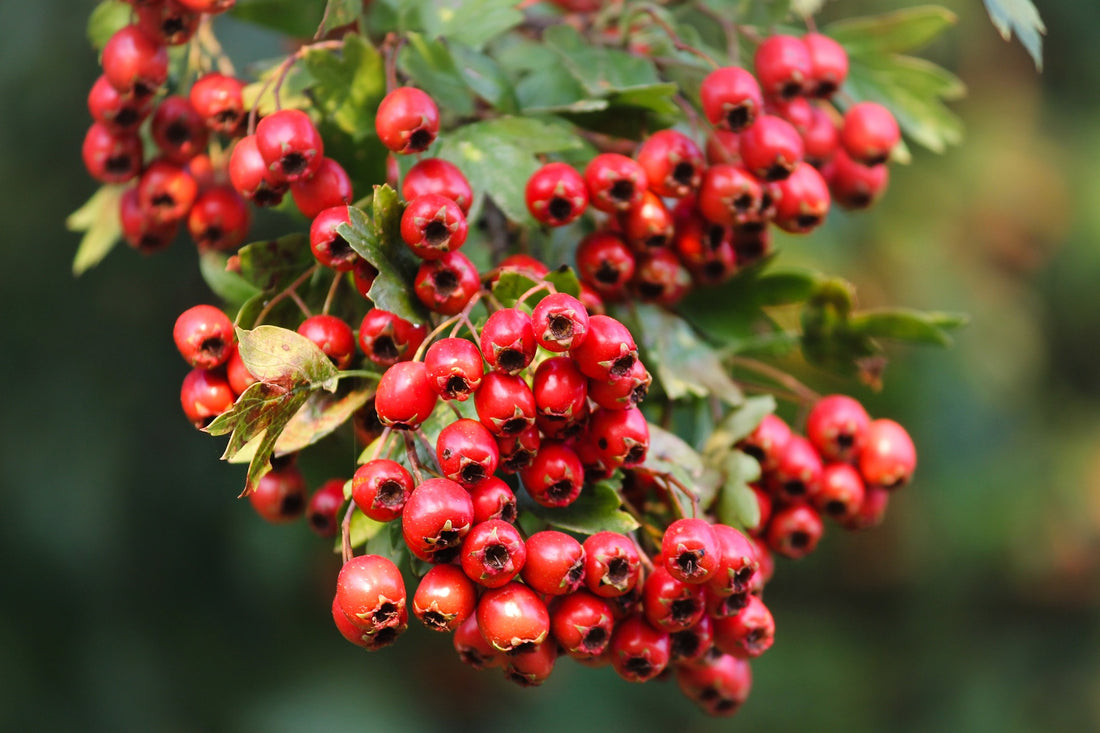Delve into the essence of the hawthorn tree; a British hegderow staple.
The Hawthorn tree (Crataegus Monogyna) is often best associated with symbolising Spring turning to Summer. Blooming with bright white flowers in May which transform into ripe red berries (known as ‘haws’) later in the year. The hawthorn flowers and fruit are of huge value to our ecosystem, providing food and nutrients to many species of wildlife.
Where does hawthorn come from?
Originating from the Rosaceae family, the hawthorn tree is native to the Northern Hemisphere. In its native countries, you will also find hybrid species which have developed over time. In the UK, we also have the Midland hawthorn. The best way to distinguish, is that the hawthorn has one seed, whilst the Midland hawthorn embodies two seeds. Other than that they are very hard to tell apart by eye.
You will most commonly find hawthorns in local woodlands and hedgerows across the UK.
How hawthorn reacts with our senses…
Hawthorn trees can come in many sizes. During the summer, the leaves are a bright green shade before turning golden yellow in the Autumn months.
The flowers of the hawthorn are dainty in size and a pretty shade of white (sometimes pink), gathered in small clusters. They are hermaphrodites which means each flower has both male and female reproductive organs. Most recognisable is their pungent scent which has often been compared to that of rotting flesh. Not the most pleasant!
Haws are the tiny red berries that bloom in the latter of the year and can outlast many other berry species in the colder climate. The berries are edible and are often used in jellies, liqueurs and almost any other recipe that you desire. To taste, the haws are tart with a faint sweetness.
What flavours compliment hawthorn?
The tartness of the haw berries, means that they are often used in sweet recipes. Their flavour is complimented by well citrus extracts such as lemon, and even spices such as nutmeg depending on what you are cooking.
In gins and botanical spirits, the haws will often be paired with other berry, and rich fruit flavours such as plum. Either a cordial or distilled. Again a dash, or garnish, or a citrus fruit will often compliment such cocktails well.
Hawthorn in mythology
Hawthorn has many mythological and symbolic meanings. Firstly, the hawthorn is commonly known as Pagan symbol of fertility.
The hawthorn tree also has ancient ties with European holiday, May Day. Its green leaves and dainty flowers would often be used in creating May Day garlands and the iconic Green Man wreath.
However, it’s reputation is not all positive. At the time of the Great Plague, the hawthorn flowers were believed to carry the scent of the disease. For this reason, it was believed that if you brought them into your home that illness and death would fall upon your household.
Today, a mixture of essences from the hawthorn leaves, berries and flowers can be used for medicinal purposes to improve heart health.

